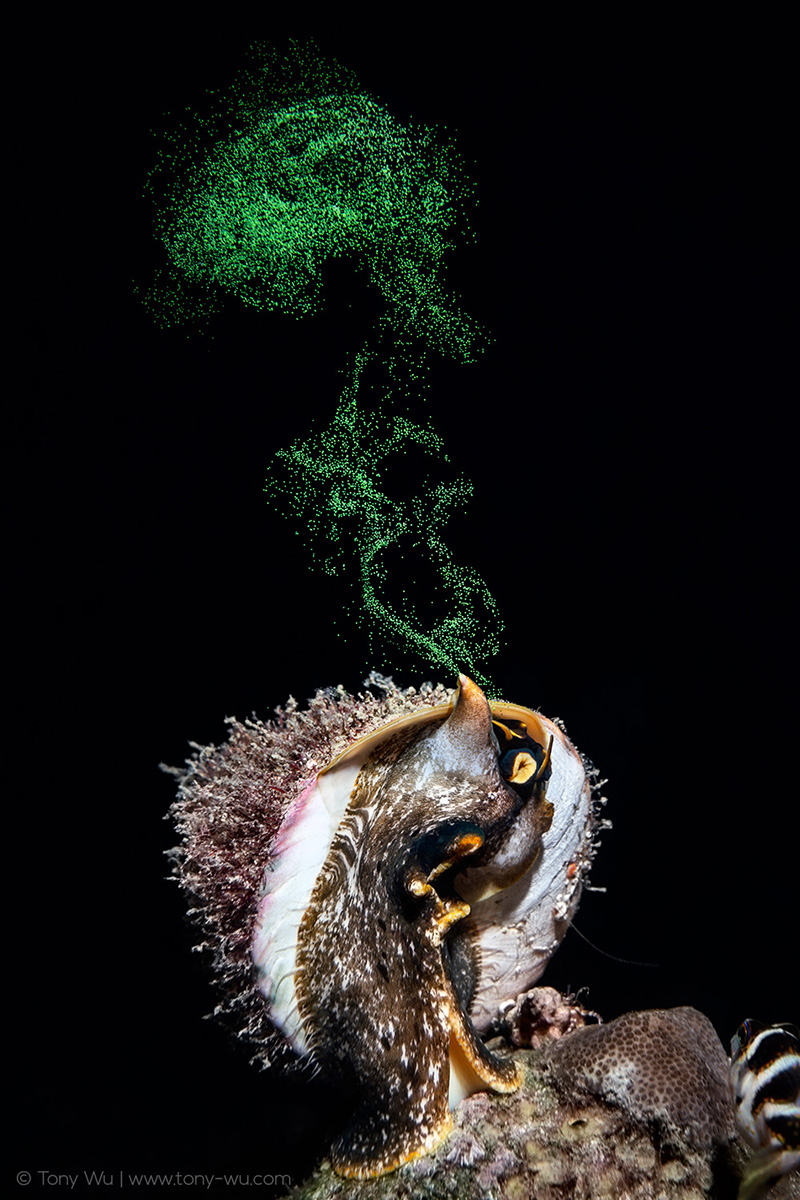This is a Pfeiffer's top shell (Tegula pfeifferi). It is perched atop a structure of rock and coral, broadcasting eggs into the water while attended to by a hermit crab and little pufferfish.

This was the second time that I have had the opportunity to photograph a female top shell of this species broadcasting eggs. I like the photo I took the first time, but this one turned out better.
The snail ascended to maximum high ground, which meant no visual clutter behind the subject. Having witnessed the egg-ejection-exercise once before, I knew what to expect. Experience confers advantage.
I got to thinking about this photo because it was one of the subjects mentioned in the introduction for an interview I did that recently aired on the BBC radio program Outlook.
"OK, but why did you title this post Green Eggs and Ham?" you might be wondering.
The green-eggs part is clear. The Ham part is not a reference to pork, and the title as a whole isn't a reference to the Dr. Seuss book.
The phrase popped into my mind because it was a radio interview.
Ham radio. Get it?
My brain makes odd connections, I know. Many of my synapses have gotta be wired funny. It is what it is.
I spoke with Emily Naylor, the interviewer, for about an hour and a half. The editors wisely cut that down to 17 minutes or so.
Anyway, if you'd like to listen to me ramble about something stupid I did (lots of material to work with there) and discuss something important I learned early on, you can click through to the BBC Outlook page. My part starts at 26:30.
Alternatively, I've clipped just my portion of the episode:
Incidentally, as I was writing this post, I realized that I had no idea where the phrase ham radio comes from or what it references. Turns out, the term ham was a derogatory term going back to the days of the telegraph. People who were not proficient morse coders were labeled ham-fisted. This carried forward to the new-fangled technology of radio as a reference to amateur radio operators.